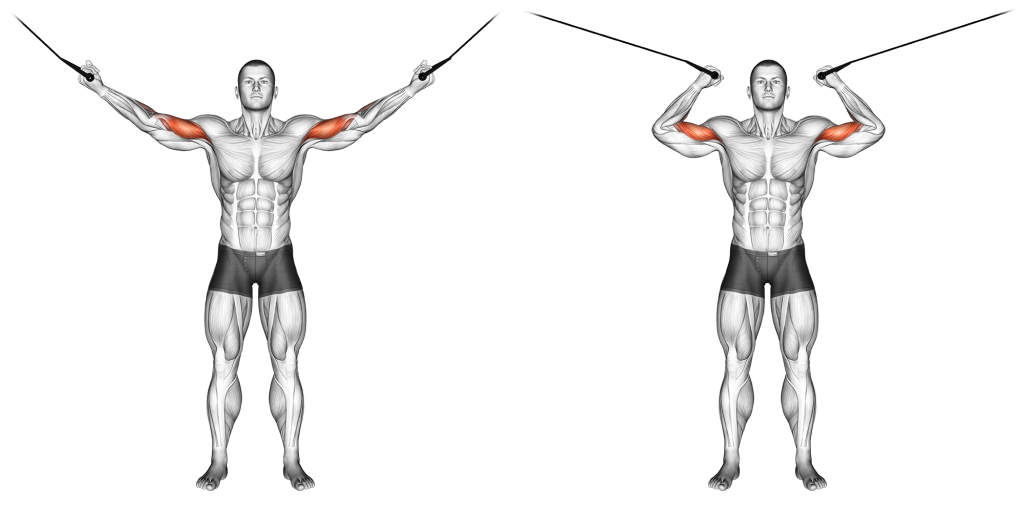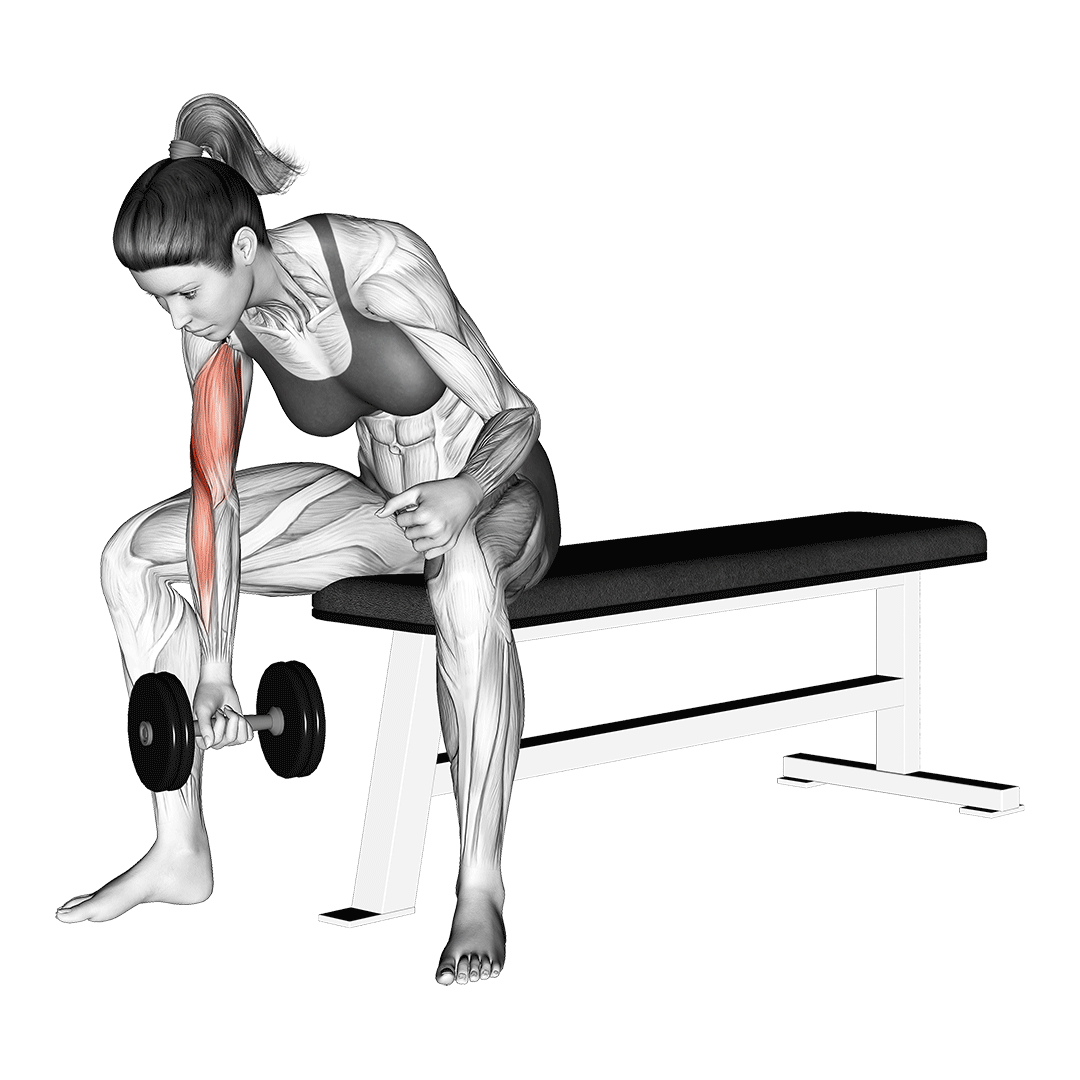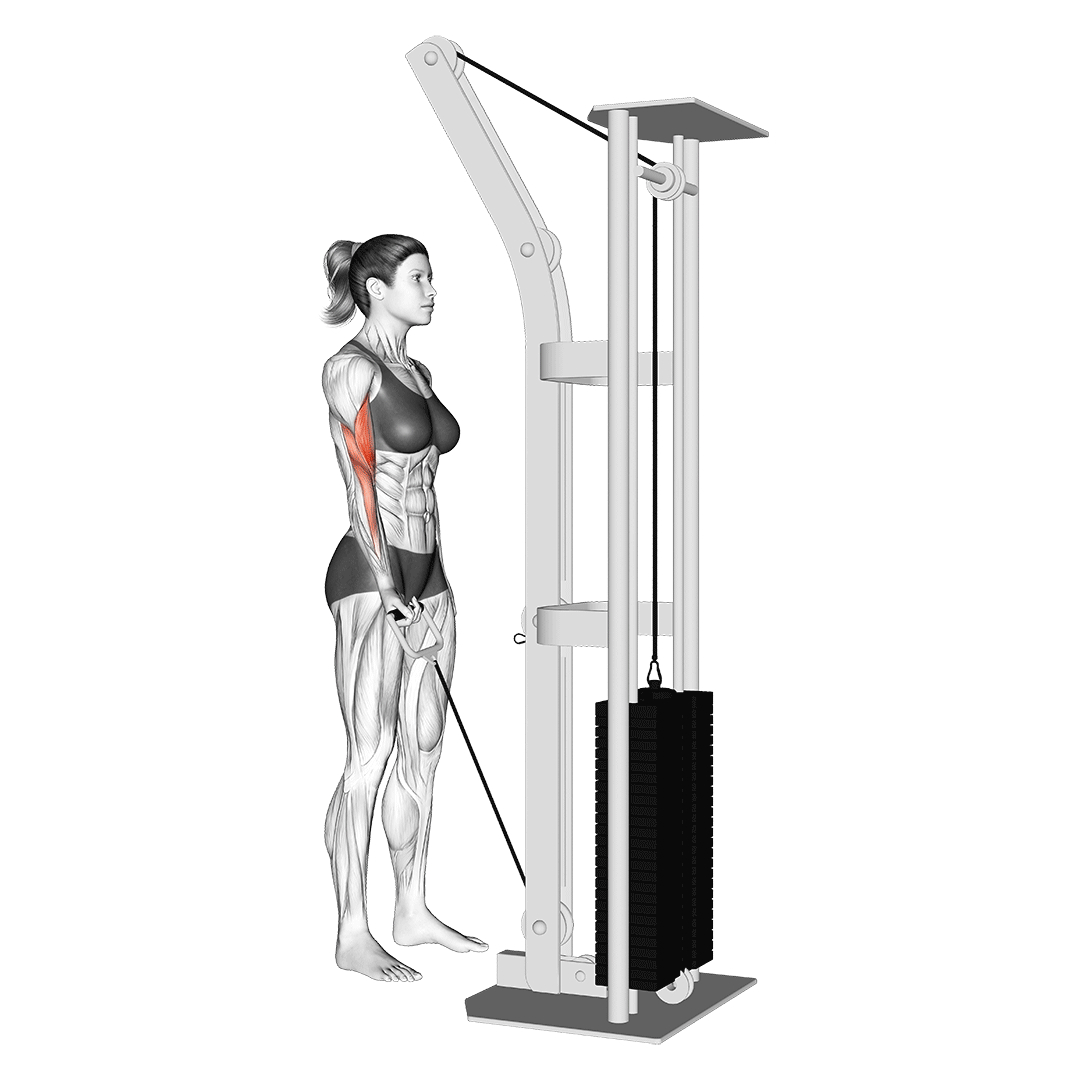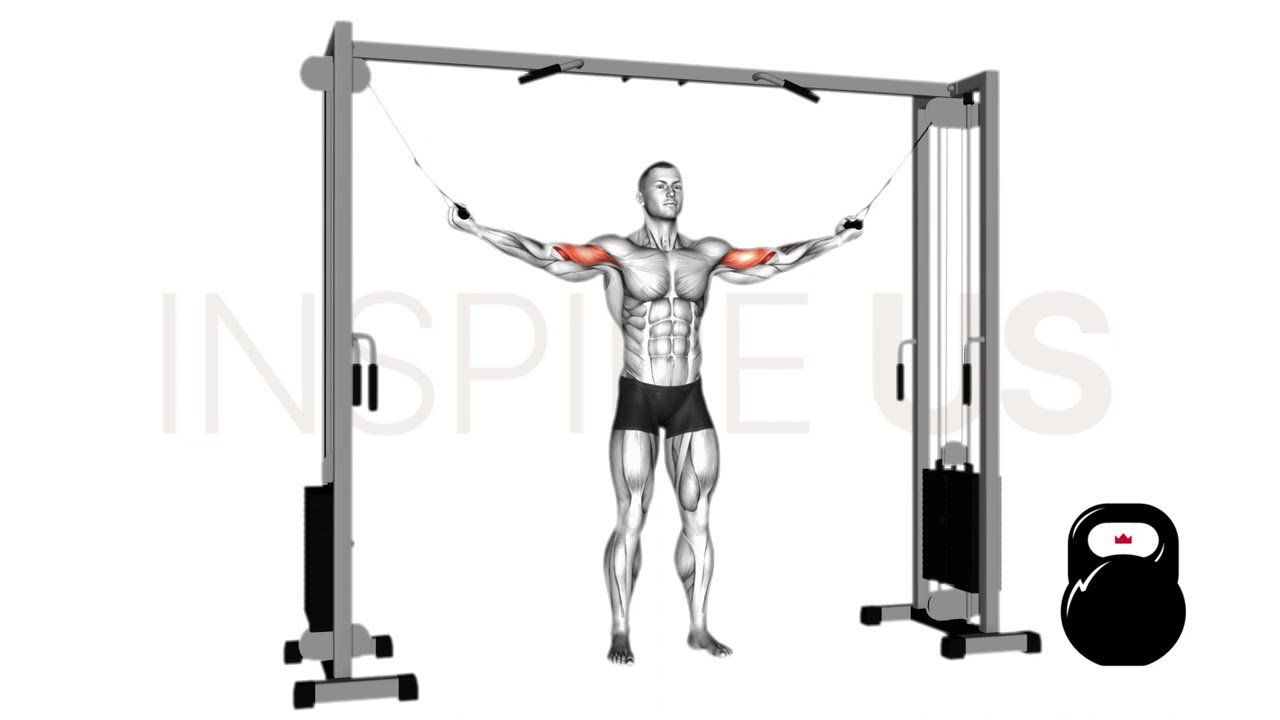High Pulley Cable Curl: Benefits, Muscles Worked, and More
Also known simply as the “high cable curl”, the high pulley cable curl is classified as a single-joint open chain isolation exercise. It is specifically performed in order to target the biceps with the use of a cable machine.

High pulley cable curls are most often programmed as an accessory exercise by bodybuilders and other hypertrophy-focused individuals seeking greater development of their biceps “peak” - or what is otherwise known as the long, outer head of the muscle.
How to do High Pulley Cable Curls
To perform a set of high pulley cable curls, the lifter must stand between two cable machine pulleys set at head-height. In addition, a pair of single grip handles will need to be attached to both cables.
With the machine appropriately set up, the lifter will then grasp both handles in an underhand grip, allowing their arms to splay out to either side. If done correctly, their palms will be initially facing upwards.
From this position, they will pull the handles towards the sides of their head. The elbows should be kept stationary as they do so.
Once the biceps have been worked through their fullest range of motion, the lifter will allow the resistance of the cables to slowly pull their hands back out to the sides - thereby completing the repetition.
What Muscles Do High Pulley Curls Work?
High pulley cable curls are an isolation exercise. This means that they solely target the biceps brachii - particularly the long head or “peak” of the biceps.

What are the Benefits of the High Pulley Cable Curl?
When performed correctly, the high cable curl can help you achieve the following benefits.
Excellent for Building the Biceps’ Peak
High pulley cable curls are considered to be one of the most effective movements for building up the peak of the biceps - of which refers to the prominent appearance of the long head when flexed.

High pulley curls isolate the biceps in a wide range of motion and offer the opportunity for high training volume. This makes them invaluable for inducing hypertrophy and otherwise improving the appearance of the biceps brachii.
An emphasis on the biceps’ peak is of particular importance to bodybuilders, as a higher biceps peak is considered an important aspect of many bodybuilding competition poses.
Self-Stabilizing and Excellent for High Volume Training
Unlike free weight exercises, exercises that make use of machines are “self-stabilizing”. This means that less isometric contraction is required because the source of resistance (the machine) remains stable throughout the set.
Less isometric contraction of stabilizer muscles equates to more energy being available for the biceps to use, meaning there is a greater capacity for training volume.
Reinforces Elbow Flexion
The biceps brachii are part of a group of arm muscles known as elbow flexors - all of which contribute to flexion of the arm. This is a vitally important mechanic in nearly any activity involving the arms, and is further reinforced with regular training of the biceps themselves.

The low impact and low risk nature of high pulley cable curls allows the lifter to reinforce elbow flexion by strengthening the biceps.
Novice-Friendly and Low Impact
High cable curls are considered appropriate for novice lifters due to their adjustability and relatively simplistic mechanics. This is further compounded by the low risk of injury involved.
So long as the exercise is performed correctly (and low or moderate resistance is used), there is very little chance the lifter will sustain an injury.
Can Become a Unilateral Exercise
For an even easier time isolating the biceps, the high pulley cable curl can be performed with one arm at a time. This will allow the lifter to better focus on properly contracting their biceps.
Furthermore, performing high pulley cable curls in this manner can allow novices to focus on proper form - maximizing not only time under tension, but also the quality of the repetition.
Common High Cable Curl Mistakes
Although the high pulley cable curl is relatively simple to perform, the following mistakes are commonly made by even highly experienced weightlifters.
Leaning the Body Forwards
Leaning the torso forwards during a high cable curl repetition may draw the upper arms out of a neutral alignment with the shoulders. This can cause strain for not only the biceps, but also the scapula and shoulder joints as well - potentially leading to injury.
To safely perform the high pulley cable curl, it is important to ensure that the upper arms are aligned with the shoulders and the sides of the torso.
Moving the Elbows
Regardless of whether it is inwards, backwards or in a vertical direction, the elbows should remain stationary during a high pulley cable curl repetition.
If the elbows begin to move during the exercise, it may be a sign that too much weight is being moved. Or, alternatively, it may be a sign of poor biceps mobility.
In either case, lifters performing high cable curls should ensure that the only parts of the arms that move are the forearms and hands. The elbows should remain fixed in place throughout the set.
Contracting the Back Muscles
Lifters attempting to push beyond the point of fatigue - or those lifting too much weight - may begin to utilize their lats to move the handles.
Of course, this is considered to be an error in execution. The high pulley cable curl is meant to be performed as a biceps isolation exercise.
One good cue for ensuring this does not occur is to check for any strain or contraction felt in the back. If movement of the latissimus dorsi or trapezius is encountered, it may be a sign that the exercise is being performed incorrectly.
Setting the Pulleys too High
Another common high cable curl mistake involves the machine itself.
Setting the cable pulleys too low can turn the exercise into a regular cable curl, while setting them too high will shorten the range of motion. A pulley set too high is especially problematic, as a shorter range of motion equates to the exercise being less effective in general.
For most individuals, setting the cable pulley at approximately the height of their head will be ideal.
Lifters with shorter arms or poor mobility should set the pulleys slightly lower - but generally never allow their arms to be at a decline angle to the torso.
Alternatives to the High Pulley Cable Curl
If the high pulley cable curl just isn’t to your liking, try out the following alternative exercises.
Concentration Curls
Concentration curls are an effective free weight alternative to the high pulley cable curl for lifters seeking a more intense workout - or those without access to a cable machine.

Unlike high cable curls, concentration curls are primarily performed unilaterally. Furthermore, they are done in a seated position, and with the use of a dumbbell.
When substituting for the concentration curl, reducing total biceps accessory volume may be needed due to the greater intensity involved.
Preacher Curls
Another free weight alternative to the high cable curl; preacher curls are a highly intense biceps isolation exercise performed with the use of a preacher bench and free weights.

Much like the former exercise, preacher curls are excellent at solely targeting the biceps through a wide range of motion. This makes them ideal for lifters seeking even greater recruitment.
If switching out high pulley cable curls for preacher curls, remember to summarily also dial back the volume.
Conventional Cable Curls
For lifters who wish to equally distribute the resistance between both heads of the biceps, dropping the pulley to the ground may suffice.

Doing so essentially transforms the exercise into a conventional cable curl, rather than a high pulley one.
Not only will lowering the pulley allow for both sides of the biceps to be equally emphasized - but it will also allow for an angle of resistance at the front of the body. This can make proper form adherence easier, especially for lifters who have trouble keeping their elbows stationary during the high pulley cable curl.
In addition, more resistance may be used with the conventional variation, further upping the intensity.
Frequently Asked Questions (FAQ)
Which Head Do High Cable Curls Work?
High cable curls will place more emphasis on the long, outer head of the biceps brachii. This is due to the wide position of the arms.
Are Cable Curls Better Than Dumbbell Curls?
In certain aspects, yes.
Cable curls are easier to adjust, relatively safer and allow for greater isolation of the biceps to take place due to their fixed-path nature.
However, this does not necessarily make them better than dumbbell curls in their entirety. Either exercise has their place in a proper workout plan. It is important to understand the differences between the two for a more effective program exercise selection.
What is the Best Attachment for High Pulley Cable Curls?
High pulley cable curls are most effective when used with one-handed attachments. A suitably light and comfortable pair should suffice.
Lifters who wish to try out the front-facing high pulley cable curl can make use of a straight bar attachment instead.
References
1. Barakat, Christopher, Renato Barroso, Michael Alvarez, Jacob Rauch, Nicholas Miller, Anton Bou-Sliman, and Eduardo O. De Souza. 2019. "The Effects of Varying Glenohumeral Joint Angle on Acute Volume Load, Muscle Activation, Swelling, and Echo-Intensity on the Biceps Brachii in Resistance-Trained Individuals" Sports 7, no. 9: 204. https://doi.org/10.3390/sports7090204
2. Nunes JP, Jacinto JL, Ribeiro AS, Mayhew JL, Nakamura M, Capel DMG, Santos LR, Santos L, Cyrino ES, Aguiar AF. Placing Greater Torque at Shorter or Longer Muscle Lengths? Effects of Cable vs. Barbell Preacher Curl Training on Muscular Strength and Hypertrophy in Young Adults. Int J Environ Res Public Health. 2020 Aug 13;17(16):5859. doi: 10.3390/ijerph17165859. PMID: 32823490; PMCID: PMC7460162.

